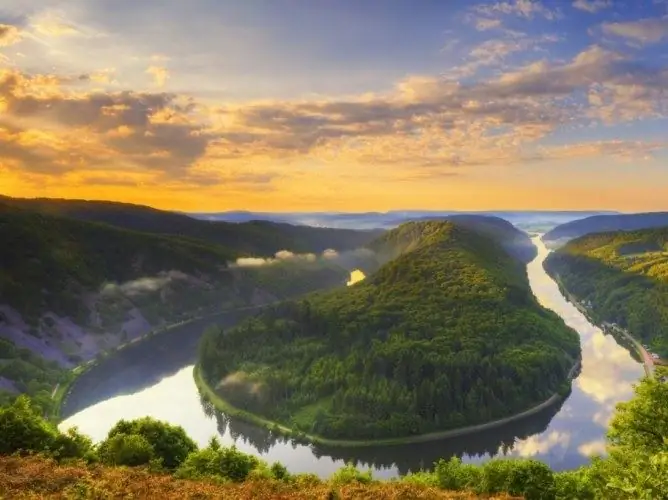Germany is considered today the leading European power in the field of economics and politics. One of the factors that allowed this country to take its high place in the world rankings was the geographical position of Germany. Located in the center of Europe, the German state has always become the center of social and political life in the Old World.

Germany on the map of Europe
Historically, until the middle of the 19th century, a large number of relatively small isolated states existed on the territory of Germany. The political map of the lands inhabited by the Germans has changed several times over the course of several centuries. In its modern form, the map of Germany was formed after World War II and finally took shape after the unification of the two German states in 1990.
Modern Germany is located in the geographic heart of Europe and shares a border with nine other states. Finding the German state on the map is easy. In the south of Germany there is a border with Switzerland, Luxembourg and Austria, in the north-west and west France, Belgium, Denmark and Holland adjoin it. To the east is Poland, and to the southeastern borders of the Czech Republic.
The German state occupies the hilly Central European Plain.
The natural borders of Germany are stretches of coastline in the northern part of the country, the Rhine River in the southwest, and the Bavarian Alps in the southeast. In the north, Germany is washed by the waters of two seas - the North and the Baltic. Germany can be seen as a link between the continental part of eastern Europe and the western end of the continent, washed by the seas.
Geographical position of Germany and its natural conditions
The geographical position of Germany as a whole determines its climate, which is very favorable for many types of economic activity. A wide variety of crops are grown here, many of which are well tolerated by the country's temperate climate, which is transitional from maritime to continental.
In the northwest of the country, the influence of the Atlantic Ocean is very significant.
The northern part of Germany, washed by the seas, is characterized by abundant and frequent rainfall. Drizzling rains often come from zones of low atmospheric pressure, concentrated in the Atlantic. Winters in Germany are comparatively mild; summers are quite cool. In the central regions of the country, the climate changes slightly, turning into continental.
The geographical position of Germany also influenced the flora of the country. Previously, deciduous forests predominated here, often with beech and oak. At present, they are almost completely cut down and partially replaced by coniferous plantations - spruce, pine, larch and fir. Oak and beech can still be found in the mountainous regions of Germany. The largest mountain range in Germany is the Bavarian Alps, located in the southern part of the country.






